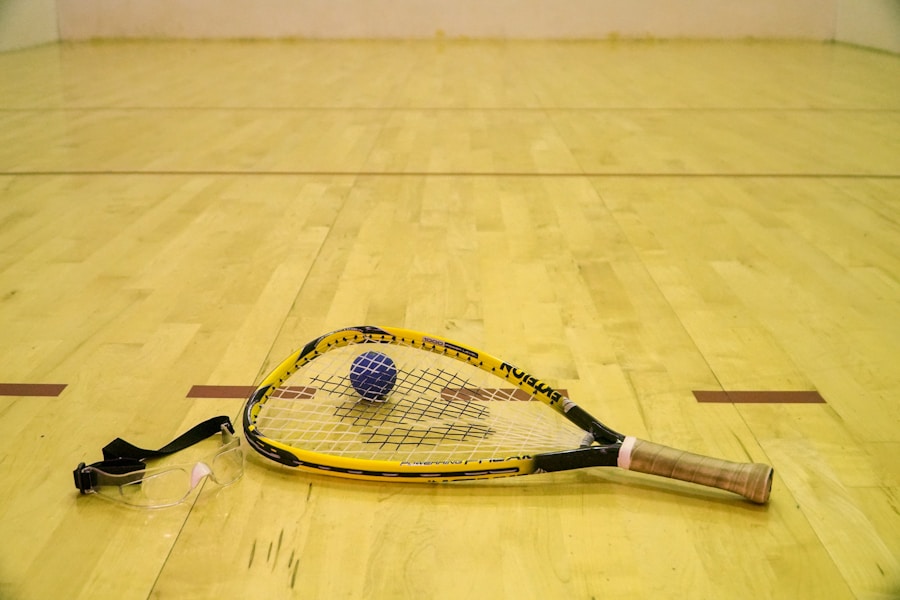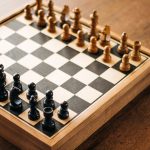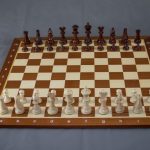Download links
How to install Mastering the Art of Badminton: Tips and Techniques APK?
1. Tap the downloaded Mastering the Art of Badminton: Tips and Techniques APK file.
2. Touch install.
3. Follow the steps on the screen.
Description
Badminton is a fast-paced racquet sport that can be played in singles or doubles formats. The game is played on a rectangular court divided by a net, with the objective being to hit a shuttlecock over the net and into the opponent’s court. The rules of badminton are governed by the Badminton World Federation (BWF), which outlines the dimensions of the court, the height of the net, and the scoring system.
A standard badminton court measures 13.4 meters long and 6.1 meters wide for doubles play, while the height of the net is set at 1.55 meters at the center. Players score points by landing the shuttlecock in their opponent’s court, and matches are typically played to 21 points, with players needing to win by a margin of two points. The equipment used in badminton is relatively simple but crucial for optimal performance.
The most important piece of equipment is the badminton racquet, which comes in various weights, balances, and materials. Modern racquets are often made from lightweight materials such as carbon fiber or aluminum, allowing for quick maneuverability and powerful strokes. The strings of the racquet also play a significant role in performance; they can be strung at different tensions to suit a player’s style.
The shuttlecock, or birdie, is another essential component of the game. It can be made from natural feathers or synthetic materials, with feathered shuttlecocks being preferred for professional play due to their flight characteristics. Understanding these basic elements is crucial for anyone looking to engage in badminton, as they form the foundation upon which skills and strategies are built.
Key Takeaways
- Badminton is played with a shuttlecock and racquets, and the game is won by scoring points through rallies and serves.
- Mastering the fundamentals of grip, footwork, and body positioning is crucial for success in badminton.
- Effective serving and return techniques are essential for gaining an advantage in a badminton match.
- Strategies for smashing and clearing shots can help players gain control and dominate the game.
- Improving defensive skills such as blocking, drop shots, and net play can make a player more well-rounded and difficult to beat on the court.
- Mental and physical conditioning are important for achieving peak performance in badminton.
Mastering the Fundamentals: Grip, Footwork, and Body Positioning
To excel in badminton, players must first master the fundamental skills that underpin effective play. One of the most critical aspects is grip technique. There are several types of grips used in badminton, including the forehand grip, backhand grip, and the panhandle grip.
The forehand grip is typically used for most strokes and involves holding the racquet as if shaking hands with it. This grip allows for maximum control and power when executing shots. The backhand grip, on the other hand, requires a different hand positioning that enables players to strike the shuttlecock effectively from their non-dominant side.
Mastering these grips is essential for executing a wide range of shots with precision. Footwork is another fundamental skill that significantly impacts a player’s performance on the court. Good footwork allows players to position themselves optimally for each shot, ensuring they can respond quickly to their opponent’s plays.
Players should focus on developing agility and speed through various footwork drills, such as ladder drills or shadow badminton, which simulate game scenarios without hitting a shuttlecock. Proper body positioning also plays a vital role in effective footwork; players should maintain a low center of gravity and be ready to move in any direction at a moment’s notice. This readiness not only enhances reaction time but also contributes to overall balance during play.
Developing Effective Serving and Return Techniques

Serving is one of the most critical aspects of badminton, as it sets the tone for each rally. A well-executed serve can put pressure on opponents right from the start, while a poor serve can lead to easy points for them. There are two primary types of serves in badminton: the high serve and the low serve.
The high serve is typically used in singles play to push the opponent to the back of the court, creating space for subsequent shots. In contrast, the low serve is more common in doubles play, aiming to keep the shuttlecock close to the net and forcing opponents into a quick response. Returning serves effectively requires anticipation and quick reflexes.
Players must read their opponent’s body language and racket position to predict where the shuttlecock will go. A successful return often involves using a combination of footwork and grip techniques to execute either a clear shot or a drop shot that can catch opponents off guard. Practicing return techniques against various types of serves can help players develop their skills and improve their overall game strategy.
Strategies for Smashing and Clearing Shots
| Player | Smash Success Rate (%) | Clear Success Rate (%) |
|---|---|---|
| Player 1 | 85 | 90 |
| Player 2 | 78 | 85 |
| Player 3 | 92 | 88 |
| Player 4 | 80 | 82 |
The smash is one of badminton’s most powerful offensive shots, capable of ending rallies quickly when executed correctly. To perform an effective smash, players must generate significant racket head speed while maintaining control over their shot placement. This requires not only strength but also proper timing and body positioning.
Players should aim to strike the shuttlecock at its highest point, ideally when it is slightly in front of them, allowing for maximum downward angle and power. Clearing shots serve as an essential counterbalance to smashing techniques. A well-timed clear can push opponents back to the rear of the court, creating opportunities for subsequent offensive plays.
The clear shot can be executed either as a forehand or backhand stroke, depending on the player’s position on the court. Players should focus on generating height and depth with their clears to ensure they land deep within their opponent’s court while maintaining control over their positioning for follow-up shots.
Improving Defensive Skills: Blocking, Drop Shots, and Net Play
Defensive skills are just as crucial as offensive techniques in badminton, as they allow players to respond effectively to their opponent’s attacks. Blocking is one of the primary defensive techniques used when facing powerful smashes or aggressive shots from opponents. A well-executed block involves using a firm wrist and stable body positioning to redirect the shuttlecock back over the net with minimal movement.
This technique requires quick reflexes and an understanding of timing; players must anticipate their opponent’s shot to position themselves correctly for an effective block. Drop shots are another vital component of defensive play, particularly when opponents are positioned far behind the net. A well-placed drop shot can catch opponents off guard and force them into a scramble to reach the shuttlecock before it lands.
Players should focus on using soft hands and precise wrist movements to execute drop shots effectively while maintaining control over their body positioning for quick recovery afterward. Additionally, mastering net play is essential for both offensive and defensive strategies; players should practice quick reactions at the net to intercept shots and create opportunities for winning points.
Mental and Physical Conditioning for Peak Performance

Physical Conditioning for Peak Performance
Physical conditioning involves building strength, endurance, flexibility, and agility through targeted training regimens. Incorporating exercises such as interval training, strength training with resistance bands or weights, and flexibility routines like yoga can significantly enhance overall athletic performance on the court.
Developing Muscle Memory and Reaction Time
Additionally, practicing specific badminton drills that mimic game scenarios can help players develop muscle memory and improve their reaction times.
Players must cultivate focus, resilience, and strategic thinking to navigate high-pressure situations during matches effectively. Techniques such as visualization can help players mentally rehearse their performance before matches, enhancing confidence and reducing anxiety levels. Furthermore, developing a strong pre-match routine can help players enter competitions with a clear mindset and heightened concentration levels. By addressing both mental and physical aspects of training, players can optimize their performance and elevate their game to new heights.
If you are looking to enhance your sports betting experience, you may want to check out this article on maximizing your sports betting experience with Taya777 online sports. This article provides valuable tips and strategies for making the most out of your bets. Additionally, if you are interested in exploring other unique online games, you may want to read about Taya777 larong pangingisda (fishing game) memancing dengan keberuntungan. This article discusses the exciting fishing game offered by Taya777 and how luck plays a role in the game. Lastly, if you want to unlock the full potential of Taya777 online sports, be sure to read this article on unlocking the potential of Taya777 online sports.
FAQs
What is badminton?
Badminton is a racquet sport played by either two opposing players (singles) or two opposing pairs (doubles), who take positions on opposite halves of a rectangular court that is divided by a net.
What equipment is needed to play badminton?
To play badminton, you will need a shuttlecock, a badminton racket, and a badminton court with a net. It is also recommended to wear appropriate footwear and comfortable clothing.
What are the basic rules of badminton?
The basic rules of badminton include serving diagonally, scoring points by landing the shuttlecock within the opponent’s court, and winning a match by winning two out of three games.
What are the health benefits of playing badminton?
Playing badminton can provide numerous health benefits, including improved cardiovascular fitness, agility, coordination, and flexibility. It also helps in burning calories and reducing the risk of chronic diseases.
What are the different types of badminton shots?
Some of the different types of badminton shots include the clear, drop shot, smash, drive, and net shot. Each shot has its own specific technique and purpose in the game.
What are the different types of badminton tournaments?
There are various types of badminton tournaments, including local, national, and international competitions. The most prestigious international tournaments include the All England Open, BWF World Championships, and the Olympic Games.





